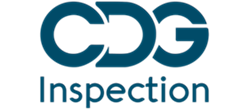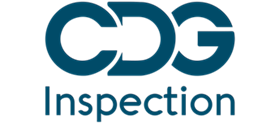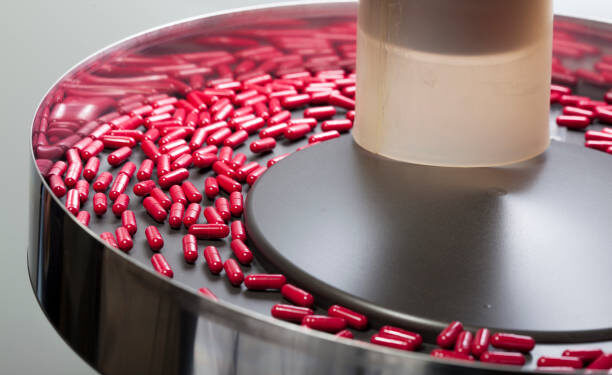A cGMP (current Good Manufacturing Practices) audit is a crucial process in the pharmaceutical, biotechnology, and medical device industries to ensure that products are manufactured, tested, and distributed in a safe and consistent manner. One of the critical aspects of cGMP compliance is adherence to hygiene and gowning procedures in manufacturing facilities. This is vital to prevent contamination, ensure product quality, and maintain a sterile and controlled manufacturing environment. In this comprehensive guide, we will explore how a cGMP audit verifies adherence to hygiene and gowning procedures in manufacturing, delving into the importance of hygiene and gowning, audit processes, key elements of compliance, and the implications of non-compliance.
Importance of Hygiene and Gowning Procedures:
Maintaining proper hygiene and gowning procedures is essential in the manufacturing of pharmaceuticals and medical devices for several reasons:
- Preventing Contamination: The manufacturing of pharmaceuticals and medical devices requires a controlled environment to prevent contamination by microorganisms, particulates, and other potential sources of impurities. Proper hygiene and gowning procedures help create a clean and sterile environment that minimizes the risk of contamination.
- Ensuring Product Quality: Contaminants in pharmaceuticals and medical devices can compromise product quality, safety, and efficacy. Adherence to hygiene and gowning procedures ensures that the final products meet the required quality standards and are safe for patient use.
- Regulatory Compliance: Regulatory authorities such as the U.S. Food and Drug Administration (FDA) and the European Medicines Agency (EMA) mandate adherence to cGMP guidelines. Compliance with hygiene and gowning procedures is a fundamental requirement for obtaining and maintaining regulatory approval.
- Worker Safety: Proper gowning procedures not only protect the products but also safeguard the workers. Gowning helps prevent employees from inadvertently introducing contaminants into the manufacturing environment and also shields them from potential hazards.
cGMP Audit Process for Hygiene and Gowning Procedures:
A cGMP audit is a systematic and comprehensive evaluation of a manufacturing facility’s processes, systems, and documentation to ensure compliance with established regulatory standards. The audit process involves several steps to verify adherence to hygiene and gowning procedures:
- Pre-Audit Preparation: The manufacturing facility prepares for the audit by reviewing its hygiene and gowning procedures, documentation, and training records. This ensures that all necessary information is readily available for the auditors.
- Selection of Audit Team: An audit team comprising internal or external auditors is chosen. These auditors are typically experts in cGMP regulations, hygiene, and gowning procedures.
- On-Site Inspection: Auditors conduct an on-site inspection of the manufacturing facility. They assess the design of the cleanrooms, equipment layout, air filtration systems, and overall facility cleanliness.
- Document Review: Auditors review documentation related to hygiene and gowning procedures, such as standard operating procedures (SOPs), training records, and maintenance logs. This review ensures that the facility has established and documented proper procedures.
- Observation of Practices: Auditors observe employees’ adherence to gowning procedures, hand hygiene, and overall cleanliness. They assess whether employees are following proper aseptic techniques and using appropriate protective clothing.
- Sampling and Testing: In certain cases, auditors may collect environmental samples to test for microbial contamination. These samples help assess the effectiveness of the facility’s hygiene and gowning procedures in controlling contamination.
- Interviews and Training Records: Auditors may conduct interviews with facility personnel to gauge their understanding of hygiene and gowning procedures. They also review training records to ensure that employees have received proper training.
- Gap Identification: During the audit, any gaps or deviations from established procedures are identified. These gaps may include inadequate gowning practices, improper disinfection, or failure to maintain cleanroom conditions.
- Audit Report: Once the audit is complete, the audit team compiles a comprehensive report detailing their findings. This report includes observations of non-compliance, areas of concern, and recommendations for corrective actions.
- Corrective Actions: The facility responds to the audit findings by developing and implementing corrective and preventive actions (CAPAs). These actions address the identified issues and are aimed at preventing their recurrence in the future.
- Follow-Up Audit: In some cases, a follow-up audit may be conducted to verify the implementation of corrective actions and assess the facility’s progress toward compliance.
Key Elements of Compliance:
Auditors focus on several key elements to verify compliance with hygiene and gowning procedures during a cGMP audit:
- Cleanroom Design and Maintenance: Auditors assess the design of cleanrooms, including air filtration systems, to ensure that they meet required standards for controlling contamination. They also evaluate the maintenance and cleaning practices that keep the cleanrooms in optimal condition.
- Gowning Procedures: Auditors observe employees’ gowning practices to ensure that they are following the correct procedures for donning and doffing gowns, gloves, masks, and other protective clothing.
- Hand Hygiene: Proper hand hygiene is crucial to prevent the transfer of contaminants. Auditors verify that employees are following proper handwashing and sanitization protocols.
- Aseptic Techniques: Manufacturing processes that require aseptic techniques demand strict adherence to protocols that prevent microbial contamination. Auditors assess whether employees are performing tasks in a manner that minimizes the risk of contamination.
- Training and Documentation: Auditors review training records and documentation to confirm that employees are adequately trained in hygiene and gowning procedures. Proper documentation demonstrates that the facility has established and communicated clear procedures.
- Environmental Monitoring: Facilities often conduct routine environmental monitoring to assess the cleanliness of the manufacturing environment. Auditors review the results of environmental monitoring and assess whether corrective actions were taken if contamination was detected.
- Change Control: Any changes to the manufacturing environment or processes that could impact hygiene and gowning procedures must be properly evaluated and approved. Auditors assess the facility’s change control processes to ensure that changes are managed appropriately.
- Contamination Control: Facilities must have procedures in place to prevent and manage contamination events. Auditors assess whether the facility has effective strategies for identifying, investigating, and addressing contamination issues.
Implications of Non-Compliance:
Non-compliance with hygiene and gowning procedures can have serious implications for both product quality and patient safety:
- Product Contamination: Failure to adhere to hygiene and gowning procedures increases the risk of product contamination. Contaminated products may lead to recalls, financial losses, and damage to the company’s reputation.
- Regulatory Sanctions: Regulatory authorities can take enforcement actions against facilities that are not compliant with cGMP regulations. These sanctions can include warning letters, fines, and even the suspension of manufacturing operations.
- Patient Harm: Contaminated products pose a significant risk to patients who use them. Substandard products can lead to adverse reactions, lack of therapeutic efficacy, or other harm to patients.
- Legal Consequences: Non-compliance can lead to legal consequences, including lawsuits from patients who experience harm due to contaminated products.
- Reputational Damage: News of non-compliance and product recalls can severely damage a company’s reputation, eroding trust among healthcare professionals, patients, and investors.
Conclusion:
Adherence to hygiene and gowning procedures is a cornerstone of cGMP compliance in pharmaceutical, biotechnology, and medical device manufacturing. A cGMP audit plays a critical role in verifying that facilities maintain proper cleanliness, gowning practices, and aseptic techniques to prevent contamination and ensure product quality. Through a systematic process of on-site inspections, document reviews, observation of practices, and interviews, auditors assess compliance with key elements such as cleanroom design, gowning procedures, hand hygiene, and more. The implications of non-compliance underscore the importance of maintaining strict adherence to hygiene and gowning procedures to safeguard product quality, regulatory compliance, and patient safety. As manufacturing processes continue to evolve, cGMP audits will remain an essential tool in upholding the highest standards of hygiene and gowning practices in the pharmaceutical and medical industries.





